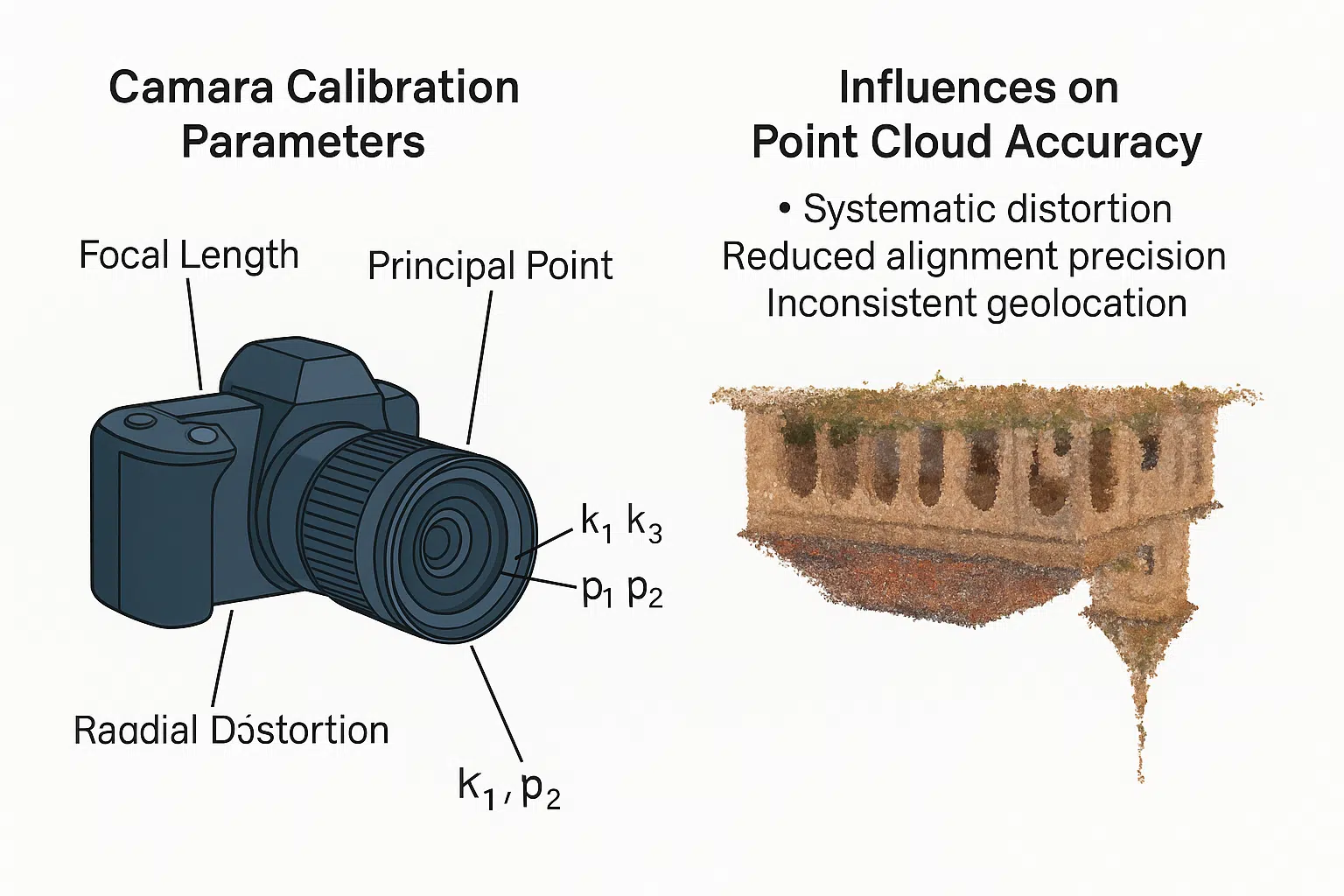Agisoft Metashape delivers high-precision photogrammetry results, but the quality of your final point cloud heavily depends on one crucial factor: camera calibration. Inaccurate calibration parameters can lead to distorted models, poor alignment, and unreliable measurements. This article explores how calibration works in Metashape, which parameters matter, and how to optimize them for the best accuracy.
What Is Camera Calibration?
Camera calibration refers to the process of determining internal characteristics of a camera. These include lens distortion, focal length, principal point, and sensor size. In photogrammetry, precise calibration is vital because 3D reconstruction algorithms rely on these values to calculate spatial geometry from 2D images.
Why Calibration Matters in Metashape
Metashape uses bundle adjustment to align photos and build a 3D model. During this process, camera parameters are estimated or imported. If these parameters are inaccurate or left unchecked, they can introduce:
- Systematic distortion in the point cloud (bending, warping)
- Reduced alignment precision
- Inconsistent GCP residuals
- Poor scale or geolocation accuracy
Key Calibration Parameters
Metashape allows you to view and edit internal calibration parameters under Tools → Camera Calibration. The key parameters include:
- Focal Length (fx, fy): Determines scale and field of view
- Principal Point (cx, cy): Optical center of the image
- K1, K2, K3: Radial distortion coefficients
- P1, P2: Tangential distortion coefficients
- Aspect ratio / skew: Sensor pixel scaling corrections
Autocalibration vs Precalibration
Metashape supports both approaches:
- Autocalibration: Metashape estimates parameters from your dataset during photo alignment. Works well for most applications, especially if using multiple views and overlaps.
- Precalibration: You manually load calibration data from lab tests or calibration software (e.g., MATLAB, OpenCV, Agisoft Lens). Provides better accuracy for metric workflows.
How Calibration Influences Point Cloud Quality
Errors in calibration propagate through the photogrammetry pipeline. Here’s how they affect various outputs:
- Sparse Point Cloud: Misalignment, poor tie-point density
- Dense Cloud: Blurred surfaces, double edges, noisy regions
- Mesh: Rippled or distorted surface features
- Orthomosaic: Warped orthorectification, especially at edges
- GCP Residuals: Poor RMS error during georeferencing
Best Practices for Calibration in Metashape
- Use consistent camera/lens setups—Avoid changing zoom or focus during capture.
- Use coded targets or chessboards if pre-calibrating with external tools.
- Capture with high overlap (80%+) to improve bundle adjustment reliability.
- Optimize after alignment using
Tools → Optimize Cameras. - Inspect residuals in the calibration dialog and GCP errors in the Reference tab.
Can I Trust Metashape’s Autocalibration?
For most hobbyist and professional projects, yes. Metashape’s autocalibration is robust when provided with high-quality input:
- Diverse viewing angles
- Plenty of image overlap
- Good lighting and sharp images
However, if you need metric precision—as in surveying, archaeology, or legal documentation—use precalibrated values and disable “adaptive camera model fitting.”
Using Agisoft Lens for Precalibration
Agisoft Lens is a free tool from Agisoft that lets you calibrate a camera by photographing a known pattern (like a checkerboard). The software then exports an XML file that can be loaded into Metashape.
- Download from: agisoftmetashape.com/downloads
- Compatible with consumer and industrial cameras
GCPs and Calibration Interaction
GCPs can improve overall model accuracy, but if your calibration is poor, even GCPs won’t fully compensate. Conversely, well-calibrated cameras reduce the number of GCPs required to achieve survey-grade precision.
Calibration for Drone Imagery
Modern drones (DJI, Skydio, Parrot) often have fixed-focus, fixed-focal-length cameras with embedded metadata. Metashape can read EXIF values, but it’s still recommended to autocalibrate, especially when processing thermal or multispectral data.
Conclusion
Camera calibration is the foundation of accurate 3D reconstructions. Whether you rely on Metashape’s built-in autocalibration or import precalibrated parameters, it’s critical to understand the impact of internal geometry on point cloud quality. Small distortions in lens or focal length can lead to large deviations in your model. For professional workflows, make calibration a core part of your photogrammetry pipeline.


